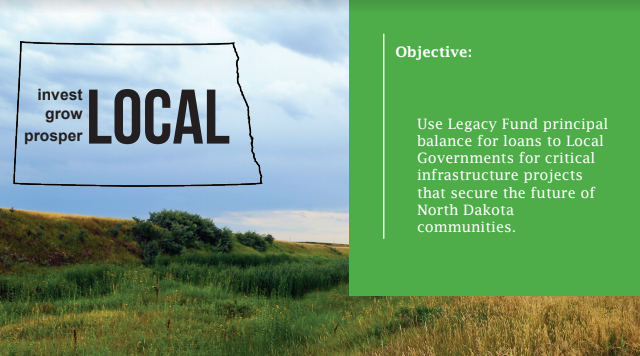Rep. Roscoe Streyle: Treasurer Schmidt Is Wrong to Oppose Legacy Fund Loan Program

This guest post was submitted by state Rep. Roscoe Streyle, a Republican from Minot.
It’s interesting that State Treasurer Kelly Schmidt, who preaches financial literacy, apparently needs a little teaching herself. One only needs to look at the data to prove it. To be fair the Legacy Fund has had a good past few years in the market, but the concept doesn’t propose moving assets from the equities (stocks) portion of the investment fund, but rather the fixed income and others areas highlighted.
The Legacy Infrastructure Revolving Loan Fund concept would propose investing some of the fixed income, cash, and diversified real asset portion of the investment portfolio directly into North Dakota loans (investments) at a fixed rate of return of 1.50%. Would the fund be “giving up” some potential return? Yes, in some cases if the good market returns continue, which is an unknown. As you can see from the data, the Diversified Real Asset and Cash investments haven’t produced a 3 year rate of return greater than the proposed 1.50% rate. The fixed income is pretty steady at slightly less than 4% return.
If you allocate all the invested dollars that are in Cash and Diversified Real Assets to the new Legacy Infrastructure Loan Fund, you can cover a lot of the projected loan demand in the shorter term. By simply moving (on as needed basis) a small portion of the fixed income from Wall Street to North Dakota Main Streets you will see many projects completed and a slightly reduced rate of return.
The Treasurer neglected to include all the facts in her letter, including how completing projects now vs. decades later will save the state and local taxpayers (citizens) hundreds of millions in inflationary costs and while generating economic growth in these North Dakota communities. It’s a win-win for the taxpayers and the Legacy Fund.
 Let’s use the Mouse River Basin project as an example, it’s a nearly $1 billion project, with the local share being around $300 million.
Let’s use the Mouse River Basin project as an example, it’s a nearly $1 billion project, with the local share being around $300 million.
Using traditional funding sources (multiple bonds) the project would take 30 years to complete at a cost of around $569 million dollars.
Using the Legacy Infrastructure Revolving Loan Program and assuming Minot could borrow $300 million, termed out over 50 years at 1.56% interest rate the total repayment cost is $434 million.
The project saving to the Minot region in interest alone would be $135 million dollars. The project could be completed within 7 years vs. 30 years. Using the Legacy Fund would reduce the flood control construction schedule by more than two decades, save the State of North Dakota and local taxpayers hundreds of millions.
Investing the Legacy Fund into North Dakota can help communities and the entire state create legacies now while preserving the intent of the Legacy Fund for generations to come.
Invest, Grow, Prosper…LOCAL.




